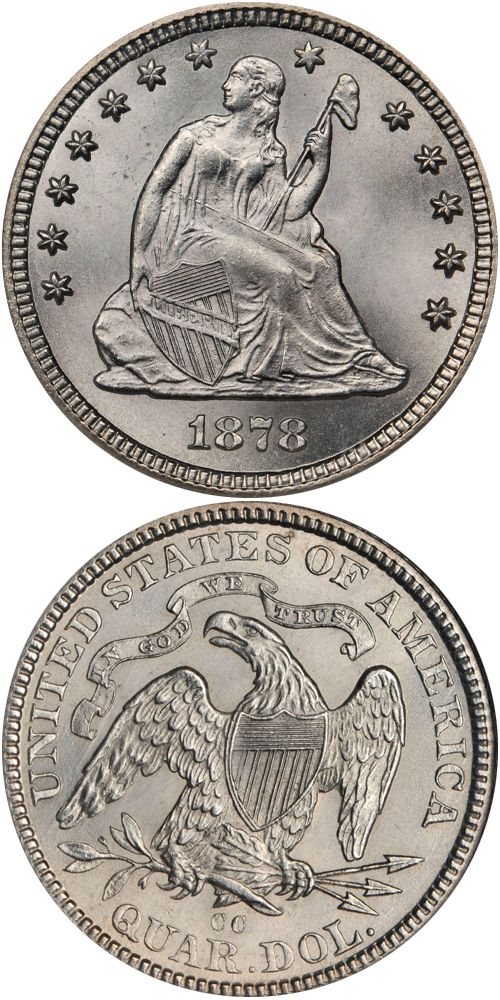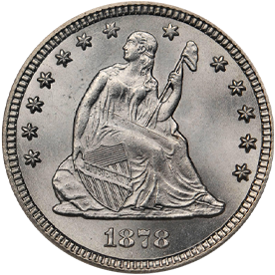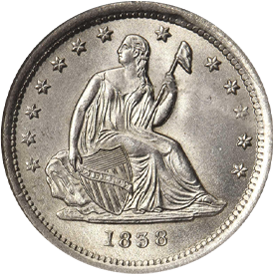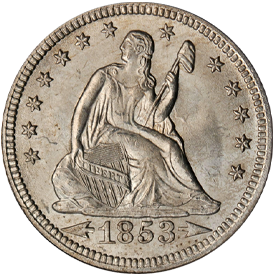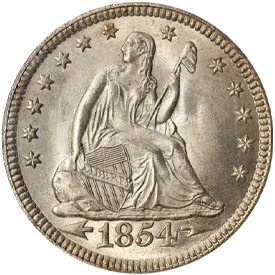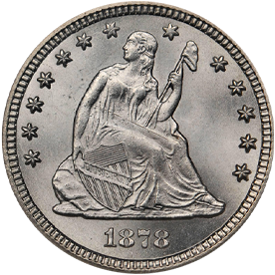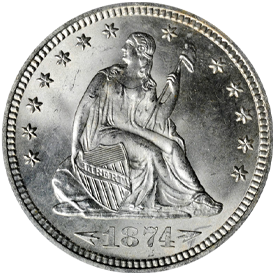As is the case with dimes already discussed, Liberty Seated quarters may be divided into several sub-types. The without-stars half dime and dime, produced in Philadelphia in 1837 and New Orleans in 1838 (1838-O), had no counterpart among quarters. The initial Liberty Seated quarter made its appearance in 1838 and featured stars on the obverse. The basic design was continued through 1891, with variations provided by the addition of arrows at the date from 1853 through 1855, rays on the reverse (1853 only), the addition of the motto IN GOD WE TRUST above the eagle beginning in 1866, and arrows at date again in 1873 and 1874.
Christian Gobrecht’s Seated Liberty design was first seen on his dollar patterns of 1836, and slowly spread to all U.S. silver coins over the next four years; the half dime and dime in 1837, the quarter in 1838, the half dollar in 1839 and finally the regular issue dollar coin in 1840. It was the first U.S. coin to depict a full figure of Liberty, and took its inspiration from the Seated figure of Britannia which had appeared on some British copper coins as early as the late 17th century.
The Seated Liberty design on the quarter enjoyed a long life of 53 years, and a number of varieties are recognized by numismatists. The two major varieties are the “No Motto” and “With Motto reverses”. Other varieties include the arrows appearing by the date in the 1853-55 period, and again during the 1873-74 period. Rays around the eagle on the reverse are seen as well, though only in 1853 and no drapery appears on Liberty’s left arm on the early issues, being added in 1840.
A complete date and mintmark set of Seated Quarters is a challenge as the “CC” mints are both rare and costly. Other keys include the 1849-O, 1860-S, 1864-S, and the 1872-S.
For many people living in the mid and late 19th century, the Seated Liberty design was the face of American silver coins, and to someone born in the early 1830s, they would have been around sixty years old when the only coin design they ever knew was replaced in 1892.
